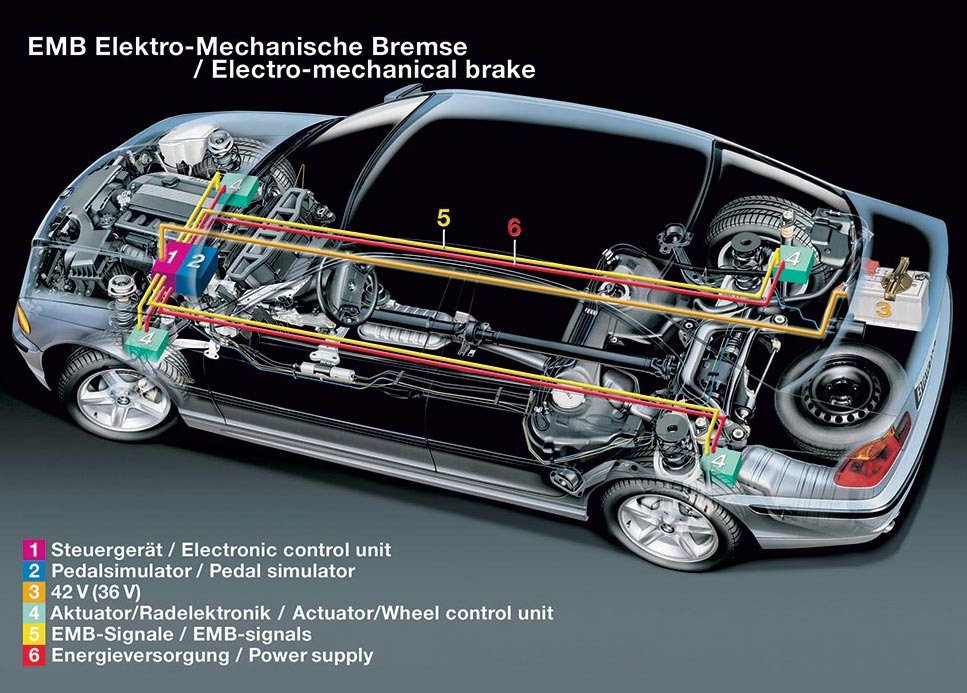If you’re just “hanging pads†without doing a careful inspection and evaluation of the whole braking system, you’re doing both your customer and your shop a disservice.
Safety concerns have led to brakes being among the most highly-engineered and rigorously-tested systems in today’s family of BMW vehicles. And properly so. Fortunately, BMW engineers have been able to design advanced systems that perform extraordinarily well, while still being relatively easy to diagnose and repair. This is especially helpful since the volume of brake work needed, unlike that of many other repairs, has remained steady, or has even increased in recent years, and is a mainstay of your business. It represents an attractive profit opportunity for independent repair shops servicing BMWs. The key, of course, is to make sure it’s done right the first time in order to prevent comebacks that can suck the profit out of an otherwise profitable job.
How do you know?
There are obvious and less-obvious indications that brake work is called for. Certainly a “Brake Service†light on the dash is the most “in-your-face†clue to the presence of a shortcoming in the system. This may be due to a pad wear indicator that has grounded to a rotor, or low pressure in one hydraulic circuit. And a signal from the BMW CBS (Condition Based Service) indicator suggests that a combination of miles driven and driving habits as analyzed by onboard electronic logic have resulted in critical brake lining wear. A parking brake light that stays illuminated can alert the driver to a brake issue even if no CBS alert is activated. Or, an illuminated ABS warning light can point to a damaged wheel speed sensor, or even to a caliper, lining, or rotor problem.
But these are far from the only indicators of brake trouble. Customer complaints often raise the need for brake work. Typical customer reports can include brake noise (especially squeal), pedal pulsation, low pedal, or pulling to one side while braking, all of which point to the need for a careful inspection of all system components.
If your shop is in an area that mandates Periodic Motor Vehicle Inspection (PMVI), you know that it requires, at minimum, a thorough visual inspection of the brake components of at least one front and one rear wheel on the opposite side of the car, and some locales require physical inspection of the brakes at all four wheels. Even if not mandated, it’s certainly wise to inspect the brakes all around since there may be a fault at just one corner.
Many independent repair shops are taking a cue from dealership strategies, performing a “safety check†of critical systems whenever a car is in for any repair whatsoever. This is a valuable service for the motorist since today’s less-frequent shop visits can allow problems to go unnoticed for extended periods of time. Such delays can lead to substantial damage and expense, so it is in the best interests of both the motorist and the repair shop for you to provide an inspection of safety-related systems, either free or for a modest fee.
Finally, a road test, even for issues not related to braking, affords technicians the opportunity to evaluate braking performance. This is especially important since stopping capability can degrade gradually over time, unnoticed by a vehicle owner who’s become accustomed to the gradual loss of control. Part of being “The Ultimate Driving Machine†is providing extraordinary braking ability, a hallmark of all BMW vehicles. A discriminating technician will likely notice any malfunction or shortcoming right away. Remember that when a car leaves your shop, your reputation rides with it. So don’t assume anything. Bear in mind that a less-skilled technician may have replaced brake components previously, possibly with sub-standard non-BMW parts. So satisfy yourself as to the integrity of all parts of the braking system.
Start with the pads
Visual inspection usually tells the tale with brake pads. Any technician worth his salt will be able to see if pads are worn to the point of needing replacement. The depth of lining left above the wear sensor is the give-away here.
But a key factor in brake pad inspection is comparison of wear levels. If the pads are worn at one front wheel but not the other, then it’s likely that the caliper at the wheel with the good pads is not working properly. This may seem counter-intuitive since at first blush you might think that there’s a problem at the wheel where the pads are worn. But in most cases it’s just the opposite.
Similarly, if one pad at a wheel is worn more than its mate at the same location, it’s likely that rust, corrosion, or a significant burr on pins or sliding surfaces is preventing a single-piston caliper from exerting equal force on both sides of the disc. With rigidly-mounted dual-piston calipers, uneven wear suggests a hydraulic problem such as a stuck piston. Also, check the friction surface of each pad for tapered wear, which can suggest binding caliper components, and look for a glazed surface which would indicate improper previous break-in, overheating of the friction material, or contamination.
If new pads are called for, choose carefully. The quality of replacement disc brake pads can range from that of “pressed cardboard†off-brands of dubious composition to more expensive specimens that may contain impressive-sounding materials like ceramics and even titanium. If your focus is on a high-quality, trouble-free brake job, as it certainly should be, your safest choice is to install the same type of pads the car was born with. After all, the brakes didn’t squeal when the car was new, and they shouldn’t squeal after your brake service. So, it’s best to use genuine OE pads from your local BMW dealer’s parts department. And, whenever replacing disc brake pads, always install new wear sensors. The old ones almost certainly have grown brittle with age and heat, and your chances of successfully removing them and installing them on new pads are almost nil.





0 Comments